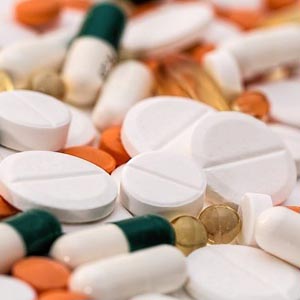From unknown poisoning to carbamazepine poisoning

Accepted: 16 May 2023
All claims expressed in this article are solely those of the authors and do not necessarily represent those of their affiliated organizations, or those of the publisher, the editors and the reviewers. Any product that may be evaluated in this article or claim that may be made by its manufacturer is not guaranteed or endorsed by the publisher.
In the 2020 annual report of the American Association of Poison Control Centers, 2562 toxic exposures to carbamazepine have been reported, 908 resulted in hospitalization, and among these about 5-6% were life-threatening or resulted in significant disability. A 15-year-old female patient was brought under suspicion of alcohol poisoning. The result of alcoholemia was 11.0mg/dL and the toxicological screening for THC, opiates, methadone, tramadol, amphetamine, MDMA, cocaine, benzodiazepines, buprenorphine was negative. At admission she was comatose (GCS=6), with metabolic acidosis, hypotension, rare short-term partial seizures, isochoric and later dilated pupils, body temperature was 36.4°C, with oxygen saturation from 89 up to 93%. Toxicological analysis were immediately extended. After three hours of admission, a result was obtained where the plasma concentration for carbamazepine was 167mmol/L. The patient was quickly prepared for hemodialysis which was performed for four hours. After 8 hours of admission the patient woke up with stable vital parameters.
Gummin DD, Mowry JB, Beuhler MC, et al. 2020 Annual Report of the American Association of Poison Control Centers' National Poison Data System (NPDS): 38th Annual Report. Clin Toxicol (Phila) 2021;59:1282-501. DOI: https://doi.org/10.1080/15563650.2021.1989785
Ghannoum M, Yates C, Galvao TF, et al. Extracorporeal treatment for carbamazepine poisoning: systematic review and recommendations from the EXTRIP workgroup. Clin Toxicol (Phila) 2014;52:993-1004. DOI: https://doi.org/10.3109/15563650.2014.973572
Weaver DF, Camfield P, Fraser A. Massive carbamazepine overdose: clinical and pharmacologic observations in five episodes. Neurology 1988;38:755-9. DOI: https://doi.org/10.1212/WNL.38.5.755
Tibballs J. Acute toxic reaction to carbamazepine: clinical effects and serum concentrations. J Pediatr 1992;121:295-9. DOI: https://doi.org/10.1016/S0022-3476(05)81208-9
Rockoff S, Baselt RC. Severe carbamazepine poisoning. Clin Toxicol 1981;18:935-9. DOI: https://doi.org/10.3109/15563658108990321
Schmidt S, Schmitz-Buhl M. Signs and symptoms of carbamazepine overdose. J Neurol 1995;242:169-73. DOI: https://doi.org/10.1007/BF00936891
Kalogera V, Galopoulos D, Eleftheriotis G, et al. Patient survival after acute voluntary poisoning with a huge dose of oxcarbazepine and olanzapine. Med Arch 2018;72:303-5. DOI: https://doi.org/10.5455/medarh.2018.72.303-305
Lee JS, Cha YS, Yeon S, et al. Changes in diagnosis of poisoning in patients in the emergency room using systematic toxicological analysis with the national forensic service. J Korean Med Sci 2021;36:e118. DOI: https://doi.org/10.3346/jkms.2021.36.e118
Parris MA, Calello DP. Found down: approach to the patient with an unknown poisoning. Emerg Med Clin North Am 2022;40:193-222. DOI: https://doi.org/10.1016/j.emc.2022.01.011
Chandran J, Krishna B. Initial management of poisoned patient. Indian J Crit Care Med 2019;23:234-40. DOI: https://doi.org/10.5005/jp-journals-10071-23307
Judge BS. Metabolic acidosis: Differentiating the causes in the poisoned patient. Emerg Med Clin North Am 2022;40:251-64. DOI: https://doi.org/10.1016/j.emc.2022.01.002
Borron, S.W. Acid–base balance in the poisoned patient. In: Jeffrey Brent et al., eds. Critical Care Toxicology. Springer, Cham. 2017. p. 325-58. DOI: https://doi.org/10.1007/978-3-319-17900-1_67
The Royal Children’s Hospital Melbourne. Clinical Practice Guidelines. Anticholinergic Syndrome. Accessed August, 2017. Available from: https://www.rch.org.au/clinicalguide/guideline_index/Anticholinergic_Syndrome/
Spagnolo PA, Badiani A, Nencini P. Polydrug abuse by intravenous use of heroin and tropicamide-containing eyedrops. Clin Neuropharmacol 2013;36:100-1. DOI: https://doi.org/10.1097/WNF.0b013e31828da20e
Bozkurt M, Karabulut V, Evren C, et al. Intravenous abuse of tropicamide in opioid use disorder: presentation of 2 cases. Subst Abus 2015;36:170-3. DOI: https://doi.org/10.1080/08897077.2014.924465
Bersani FS, Corazza O, Simonato P, et al. Drops of madness? Recreational misuse of tropicamide collyrium; early warning alerts from Russia and Italy. Gen Hosp Psychiatry 2013;35:571-3. DOI: https://doi.org/10.1016/j.genhosppsych.2013.04.013
Ponté C, Pi C, Palmaro A, Jouanjus E, Lapeyre-Mestre M. French Addictovigilance Network. Early signal of diverted use of tropicamide eye drops in France. Br J Clin Pharmacol 2017;83:1791-800. DOI: https://doi.org/10.1111/bcp.13272
Kolecki P. Medscape. Drugs & diseases > emergency medicine. sympathomimetic toxicity. Accessed 02 March, 2021. Available from: https://emedicine.medscape.com/article/818583-overview
Chiew AL, Buckley NA. The serotonin toxidrome: shortfalls of current diagnostic criteria for related syndromes. Clin Toxicol (Phila) 2022;60:143-58. DOI: https://doi.org/10.1080/15563650.2021.1993242
Murty S. Antiepileptic Overdose. Indian J Crit Care Med 2019;23:290-95. DOI: https://doi.org/10.5005/jp-journals-10071-23301
Ozhasenekler A, Gökhan S, Güloğlu C, et al. Benefit of hemodialysis in carbamazepine intoxications with neurological complications. Eur Rev Med Pharmacol Sci 2012;16:43-7.
Mohamed AM, Adnan A, Seifert SA, et al. An endoscopic end to coma. Toxicol Comm 2017;1:6-9. DOI: https://doi.org/10.1080/24734306.2017.1338372
Spiller HA, Carlisle RD. Status epilepticus after massive carbamazepine overdose. J Toxicol Clin Toxicol 2002;40:81-90. DOI: https://doi.org/10.1081/CLT-120002889
American College of Medical Toxicology. Sodium Bicarbonate Shortage Recommendations. Acessed 15 August 2017. Available from: https://www.acmt.net/wp-content/uploads/2022/06/PRS_170815_Sodium-Bicarbonate-Shortage-Recommendations.pdf
Position statement and practice guidelines on the use of multi-dose activated charcoal in the treatment of acute poisoning. American Academy of Clinical Toxicology; European Association of Poisons Centres and Clinical Toxicologists. J Toxicol Clin Toxicol 1999;37:731-51. DOI: https://doi.org/10.1081/CLT-100102451
Yang X, Xin S, Zhang Y, Li T. Early hemoperfusion for emergency treatment of carbamazepine poisoning. Am J Emerg Med 2018;36:926-30. DOI: https://doi.org/10.1016/j.ajem.2017.10.048
Ouellet G, Bouchard J, Ghannoum M, Decker BS. Available extracorporeal treatments for poisoning: overview and limitations. Semin Dial 2014;27:342-9. DOI: https://doi.org/10.1111/sdi.12238
Copyright (c) 2023 the Author(s)

This work is licensed under a Creative Commons Attribution-NonCommercial 4.0 International License.
PAGEPress has chosen to apply the Creative Commons Attribution NonCommercial 4.0 International License (CC BY-NC 4.0) to all manuscripts to be published.


 https://doi.org/10.4081/ecj.2023.11270
https://doi.org/10.4081/ecj.2023.11270







